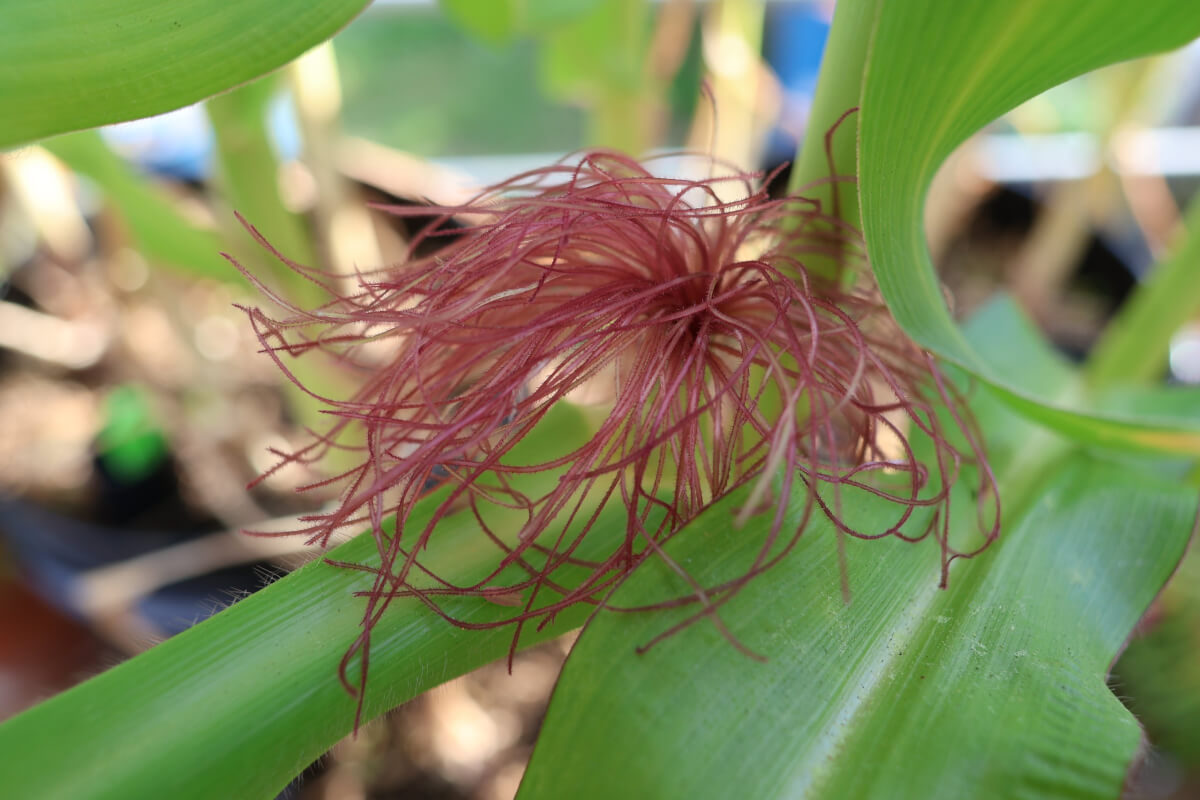Continuing our corn production series! Since many of us northerners really haven’t bothered with corn in the past, due to low/no production, we’re drilling home the important points on how this plant actually produces corn! As we mentioned, the situation with northern production has definitely changed with modern genetics like this Cafe variety.
This is the silk of the corn. This is the female bit of the plant and where the “magic happens,” so to speak. When the silk emerges, it’s attached to what amounts to the beginning of the fruit, a very tiny corn stalk.
The birds and bees story tells us that the pollen from the tassel (male bits) must make it to the female parts to create actual corn. In large corn fields, this is performed by wind. But, in the home setting and in small patches of corn, you can simply cut off bits of the tassel and gently touch it to the silks.
What’s fascinating about corn is that every one of these little silk strings is directly connected to a single kernel in the corn husk. For a full cob of corn to develop, that pollen must touch every single silk. If one single silk is missed, a kernel will not develop in that specific place on the cob!
Prior to growing corn ourselves, we had no idea how remarkable this process was. The fact that each kernel must be pollinated directly, and is done through a proxy silk outside of the husk, is utterly fascinating.
Even more fascinating, in some parts of the country, corn pollination is performed by bats instead of wind. Their fly by’s of the field disturb the pollen enough to make this process happen. To the point where many corn farmers build bat houses to promote their populations, directly assisting with their corn production. That was truly a “today I learned” fact, furthering my amazement of this crop.
I know corn isn’t at the top of every northern gardener’s list to grow, given how inexpensive it is at the grocery come peak summer. If anything, I’d encourage you to grow it just to truly connect with one of North America’s most successful crops, a marvel in genetic evolution and persistent growing prowress.


